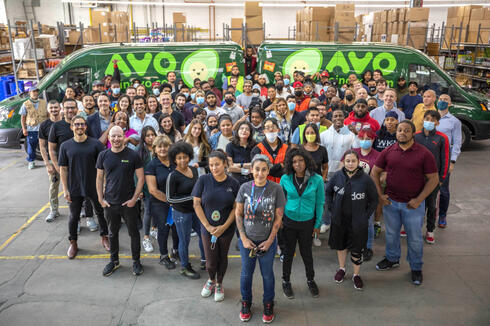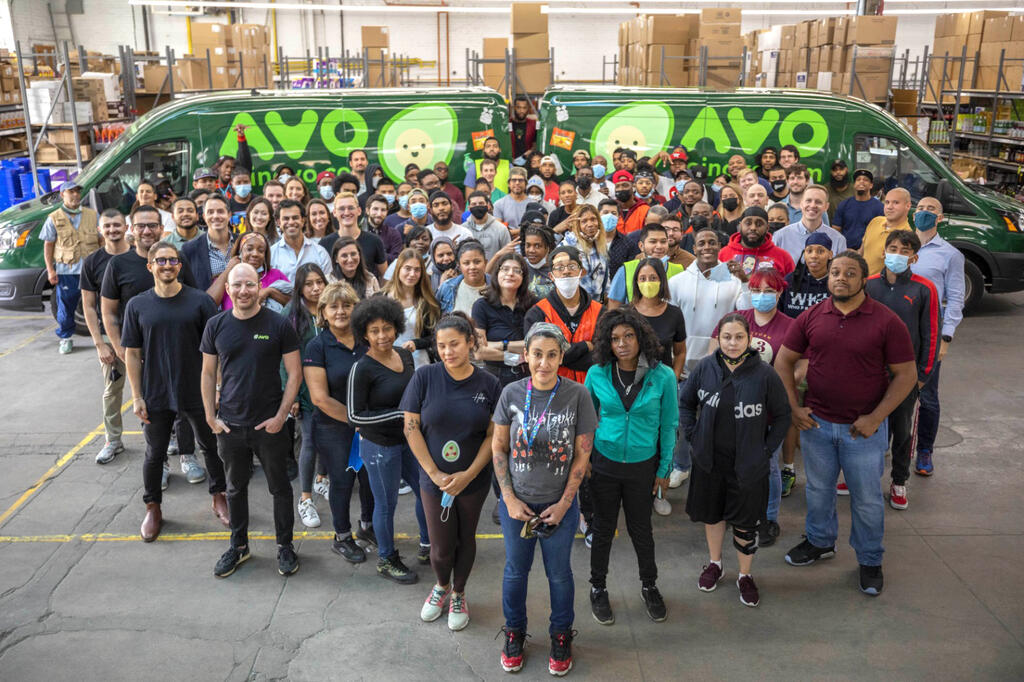
After the hangover of 2022, the real pain for high-tech will come in 2023
The big test of the upcoming year, which will decide which companies survive the crisis and perhaps get stronger and which will be closed or sold, will not be in capital raising but in business
2022 was the year of the hangover in the high-tech industry. The music at the luxurious money burning party began to fade at the end of 2021 and in the past year it could hardly even be heard. In the public markets, where companies are lucky enough to be priced on a daily basis, the music has long since disappeared with a collapse of more than 30% in the Nasdaq and a 20% fall in the S&P 500.
Exactly a year has passed since the direction of the market changed and now many of the observers from the sidelines, as well as the players in the technological ecosystem itself, are saying: ‘wait, the party is indeed over, the music can almost no longer be heard, but despite this no major disaster happened’. So a new unicorn might not be born every two days and instead of ten job offers a week, high-tech workers only get three, but apart from that, 2022 was not much different from 2021. The gloom and doom visionaries predicted mass layoffs, startup closures, down rounds, and flash sales at a low price of companies that ran into difficulties.
It did happen here and there, but mainly on the margins. There was a down round at cybersecurity unicorn Snyk, which earlier this month completed a round at a value of $7.4 billion compared to $8 billion last year, and there was the noisy closing of the delivery company Avo, whose business model was in doubt from the beginning. Even in the center of Tel Aviv, where the international giants are located alongside the best Israeli tech companies, there is still no blood flowing in the streets. And that is also true of the sector in general. The restaurants are full, the roads are clogged with Teslas, and even if apartment sales have fallen, no one is yet in a hurry to sell off apartments, purchased with options, for which it is now difficult to meet the payments.
None of this happened, but a large part of what was expected to happen in 2022 will still happen in 2023, especially in its second half. This is not an apocalyptic scenario, of course subject to the fact that the war between Russia and Ukraine ends and does not turn into a third world war, or alternatively if it does not turn out that the crypto bubble that is bursting these days has also sent its tentacles into the wider financial system.
Given a political and economic reality that will be similar to the current one, 2023 will be more painful in many respects compared to 2022, but it will also be a year to reset systems. As such, alongside the negative effects that will radiate from the high-tech industry to the entire Israeli economy, there will also be quite a few positive side effects that may even surprise many.
In this upcoming series of articles, Calcalist will map the current situation in the Israeli high-tech scene, analyze the effects of the changes on the macroeconomic reality, with the end of the era of zero interest rates, and mark the trends that will lead the industry in 2023.
The reason why, apparently, there was no great drama in 2022, or in other words the reaction that everyone expected did not arrive quickly, lies mainly in the huge amounts of money that were raised in the good years. But just as important were the maturity and experience of investors and entrepreneurs in the high-tech industry. In 2021, private technology companies raised $25 billion, more than $10 billion entered the country from public offerings on Wall Street, and another $11.5 billion flowed to Israel from the sale of companies. The total volume of exits registered in 2021 reached an unprecedented amount of $82 billion and was equal to an entire decade of exits that preceded that phenomenal year.
2020, by the way, was not that bad either, and despite the paralysis during the first half of the year due to the outbreak of the pandemic, the total volume of exits was $15 billion and another $10.8 billion were raised by startup companies. These funding rounds created a cash cushion that allowed all the players in the private market, in complete contrast to the public market, to simply not look in the mirror. If you don't need money, you don't have to talk about the value either. And if the value is not reset, then the illusion of 2021 can continue to live on.
Beyond the money that still sits in the accounts of the companies, there is also significance to the age of the industry and the large concentration of experienced players in it. This is also a big difference compared to the crisis of 2000 which led to a much faster and more violent reaction in the ecosystem of that time. The feeling was one of the end of the technological world and it is completely different from the understanding and confidence that exists today in that technology is not going anywhere and the world will still need it. This transformation will simply happen at a slower pace than it has been in the last two years. That is why the entrepreneurs, for some of whom this is not their first company, and also many venture capitalists, who have already experienced the crisis of 2000, are calmer and less prone to the panic that gripped them in 2001.
All of this is going to change in 2023. The founders, investors and managers in high-tech have gone through the initial stages of mourning and are now coming to internalize the new situation in which for many companies money is beginning to run out. "The first stage was shock, then denial and now there is internalization," Aaron Mankovski, a Partner in the Pitango venture capital fund and a veteran investor in Israel, tells Calcalist. "Companies found themselves in a situation somewhat reminiscent of a baby peeing in a diaper - at first it's warm and pleasant, but then the moment comes when it becomes cold and disgusting. That's where we've reached now."
Many of the companies, even the best, are starting to feel the cold just now, over the last few months. This cold is not necessarily blowing from the meeting rooms of venture capital funds, but from the offices of the clients' CFOs. This cold, by the way, is expected to bring another large wave of layoffs in 2023 and it may be more painful. If the wave of the last few months was mainly due to the desire to show investors how responsibly startups are managing the money, in the near future we will see the companies enter into more painful and violent moves of cuts that will occur due to a sharp hit to the income line.
The big test of 2023 that will decide which of the companies will survive the crisis and maybe even grow stronger in it and which will be closed or sold, who will hire employees and who will be fired, will not be in the level of capital raising, but first of all in business. Mankovski calls this the transition from the era of “valuation” to the era of “value”. During the high tide, the value of the company became a kind of medal or flag to boast about, much more so than the business performance, which can be hidden under the pretense of the unicorns being private companies. With the end of the age of valuation, the spotlight was turned in the direction of revenues and profits and that is where the great fear is and also the reason why in 2023 it will no longer be possible to hide. A large part of the growth of high-tech companies was based on sales of software to other high-tech companies. Now they are all re-examining the budgets and discovering that the supplier lists are too large and inflated.
Amos Haggiag, co-founder and CEO of Optibus, a unicorn that develops software for managing transportation systems, provides a glimpse into what company CFO’s are facing. "After personnel, the biggest expense in a high-tech company is computer infrastructure and software. We look at all expenses to see what can be cut, and first check what costs the most. For example, we saw that our various departments use many similar products that overlap, and if we use one product that is paid for anyway and we will cancel the others, this will reduce the costs."
The process that Haggiag described has been taking place over the last month in many companies as they are building their budgets for the next year, resulting in many SaaS companies starting to receive cancellation notices as quickly and easily as they received more and more subscribers just a year ago. A company whose product is not sufficiently unique or critical for the user, may suffer a severe hit in revenue, even before addressing operational efficiency and profitability. Therefore, 2023 will also reveal the companies that did develop a core product, important and unique enough compared to companies whose product is "nice to have, but not a must".
Nir Adler, a partner in the venture capital fund SOMV, clarified: "Mature companies that have already raised a lot of money will have to prove that they know how to grow and work independently without VC funding to promote their business." In his opinion, next year we will see companies be divided into three distinct groups. The division concerns the main pain point of Israeli high-tech today - the growth companies. The biggest problem for most of these unicorns is that the IPO market is closed and does not allow the exit on which the investors were counting on when funding the later rounds. It is important to note that the current period is less fateful for the young startups who can do everything more slowly and with greater consideration for burning cash, but have time to mature until the next tide in the markets.
Adler estimates that the unicorns will be divided into three groups as follows: "The group that I hope will be the largest, more than a third, is that of the companies that can reach a balanced bottom line and the basic economic logic behind their business model is sound. This group no longer needs the funds, but more the banks for financing current activity," he says. "The second group are those who still need money from the funds, and that's where we'll see most of the down rounds, as well as mergers and acquisitions. It's not impossible that companies that raised in 2021 or before at a value of one or two billion dollars will be sold for $700 million. The third group is ‘the blood in the streets’ - companies whose business model was not justified and therefore there will be no desire to continue financing them, so a down round is not an option either.
"Next year every entrepreneur and every CEO will have to stand in front of the mirror and look at themselves and at reality straight in the eyes to understand what has changed and how they are supposed to change."














